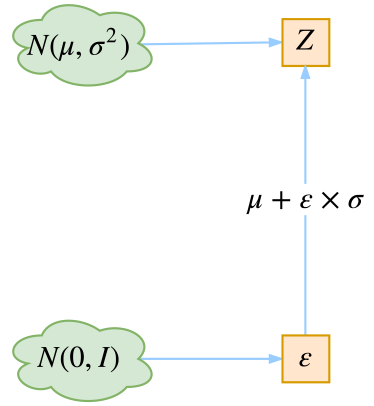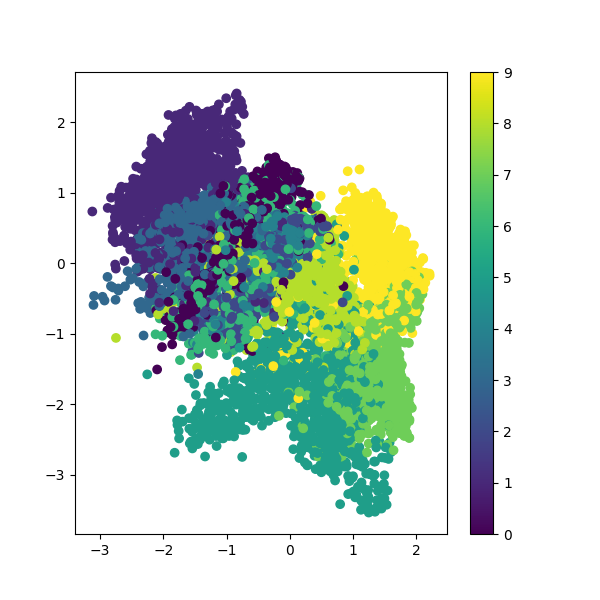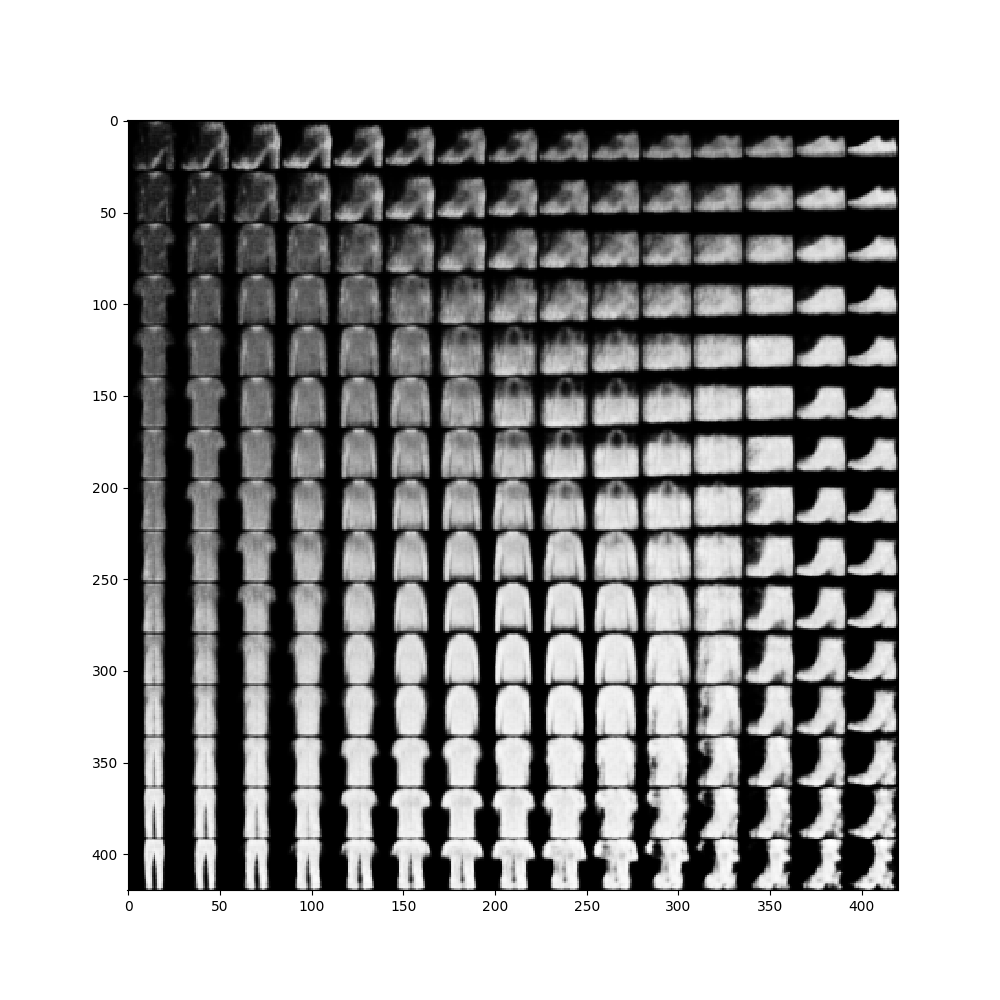变分自编码器(VAE) 直观推导
最近一周系统的看下概率论的东西,把公式都看了下,这次重新对VAE做一个直观的推导,我这里就不说VAE为什么要这么做(水平不够),只说他是怎么做的。
编码器网络结构
一般的编码器网络,是通过构造隐变量\(z\),学习从\(x\rightarrow z\)的编码器,以及从\(z\rightarrow \tilde{x}\)的解码器。但是他们的损失函数只是简单的\((x-\tilde{x})^2\)或者\(p(x)\log p(\tilde{x})\),最终缺乏一个生成的效果。

变分自编码器结构
VAE的思想说白了就是为了得到生成的效果,给隐变量\(z\)制造不确定性,然后就使用到了概率论的方案。让\(z\)成为一种概率分布,那么训练完成之后,只要给出不同的\(z\)就可以得到不同的\(\tilde{x}\),增加了生成性。
下面就是VAE的公式。使用神经网络拟合编码器\(p(z|x)\)和解码器\(p(\tilde{x}|z)\),用KL散度使隐变量\(z\)的分布接近于标准正态分布,用交叉熵使生成样本相似与原始样本。这里其实很巧妙,如果\(z\)只有均值且为0,那也就是和以前的编码器一样,没有生成效果,但是\(z\)还有方差项,可以提供噪声来保证生成能力。
\[
\begin{aligned}
p(z)&=p(z|x)p(x)\ \ \ \ \text{Encoder}\\
p(\tilde{x})&=p(\tilde{x}|z)p(z) \ \ \ \ \text{Decoder}\\
\\
\because \text{要使}\ \ p(z)&\sim N(0,1) \\
\therefore \mathcal{L}_{kl}&=KL(p(z)\| N(0,1)) \ \ \
\ \text{KL散度}\\
\\
\because \text{要使}\ \ p(x)&\approx p(\tilde{x}) \\
\therefore \mathcal{L}_{re}&= p(x)\log p(\tilde{x}) \ \ \
\ \text{交叉熵} \\
\\
\therefore \mathcal{L}&=\mathcal{L}_{kl}+\mathcal{L}_{re}
\end{aligned}
\]
下面是示意图: 
损失函数计算
重构损失
\(\mathcal{L}_{re}\)计算很简单,直接使用tf.nn.sigmoid_cross_entropy_with_logits即可。
KL损失
这个需要好好推导: \[ \begin{aligned} &KL(p({z}|x)\| N(0,1))=\int p({z}|x)\ \log\frac{p({z}|x)}{N(0,1)}\ dz \\ &=\int p({z}|x)\ \log \frac{\frac{1}{\sqrt{2\pi \sigma^2}}e^{-\frac{(z-\mu)^2}{2\sigma^2}}}{\frac{1}{\sqrt{2\pi}}e^{-\frac{z^2}{2}}}\ dz \\ &=\int p({z}|x)\ [\log\frac{1}{\sqrt{\sigma^2}}+\log e^{\frac{1}{2}(z^2-\frac{(z-\mu)^2}{\sigma^2})}]\ dz\\ &=\int p({z}|x)\ [-\frac{1}{2}\log \sigma^2+\frac{1}{2}(z^2-\frac{(z-\mu)^2}{\sigma^2})]\ dz \\ &=\int p({z}|x)\ [-\frac{1}{2}\log \sigma^2+\frac{1}{2}(z^2-\frac{(z-\mu)^2}{\sigma^2})]\ dz \\ &=\frac{1}{2}[-\int p({z}|x)\ \log \sigma^2 \ dz +\int p({z}|x)\ z^2\ dz-\int p({z}|x)\ \frac{(z-\mu)^2}{\sigma^2}\ dz] \\ &=\frac{1}{2}[-\log\sigma^2+E(z^2)-\frac{D(z)}{\sigma^2}] \\ &=\frac{1}{2}(-\log\sigma^2+\mu^2+\sigma^2-1) \end{aligned} \]
注意: 上面的\(p({z}|x)\)其实就是正态分布的概率,所以\(\int p({z}|x)\ dz=1\)。后面两个就是求\(z^2\)的期望,和\(z\)的方差。
重参数技巧
这个其实和算法没多大关系,就是因为随机采样的操作无法求导,只能对采样出来的值求导。所以就使用如下技巧:
从\(N(\mu,\sigma^2)\)中采样一个\(z\),相当于从\(N(0,1)\)中采样一个\(\epsilon\),然后让\(z=\mu+\epsilon\times\sigma\)。
这样就可以直接对值求导即可,概念图如下

代码
代码运行环境为Tensorflow 1.14:
import tensorflow.python as tf |
结果
隐空间图像

重构图像
